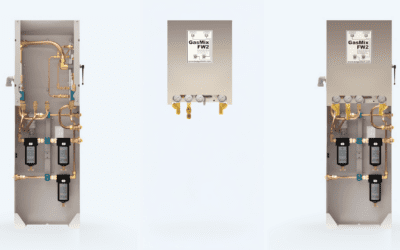While traditional brewing is an art, for the most part, we are brewing to create the perfect drink for consumers.
It’s nice; we like it, but most importantly, the drinker has to love it. And it’s not just about taste either; the consumer has to love it because you are trying to encourage them to be loyal to your brand and your products.
Take your favourite Irish nitro-stout for example; consumers expect a dark, bitter, creamy drink with a 19mm head. It is a strong image. But what if, all of a sudden, the drink you are served does not look, smell, or taste the same as it usually does?
For those running pubs or responsible for dispensing and presenting beer products, mixed gas ratios are vital. Serving a good pint to a discerning drinker will encourage loyalty to their establishment.
For the cost-minded publican, using mixed gas to present the perfect pint means that they will reduce waste in fobbing and foaming of their beers, and they will reduce the amount of wasted gas, all of which will make them more efficient. They will serve a better pint, more effectively, and it will be of less cost to them.
All the time taken to perfect the beer is not wasted beyond the Brewery. It gives the brewer the opportunity to implement controls to make sure the product is maintained in the keg and ensures it is dispensed exactly how it should be – perfectly, each and every time.
But beyond just the look, smell, and taste of your drink, what exactly does mixed gas do for your beer?
In some situations, mixed gas can be used to avoid disaster.
If you are serving a ‘nitro’ beers, you run the risk of serving it at a pressure over the balance point for that beer. This means you would be dispensing the drink at a higher pressure than the beer desires, leading to over-carbonation. For these beers, CO₂ gas alone will allow the nitrogen to disperse from the solution, and nitrogen gas alone would allow the CO₂ to disperse in the same fashion. So, to keep the beer in equilibrium, a very exact ratio of gas is required.
For non-nitro beers, the ‘as brewed’ CO₂ content will be quoted in volumes or grams per litre. This level is hand-picked by the brewer, and it plays a huge role in determining the taste and appearance of the drink.
The correct gas mix will maintain the balance of the beer. CO₂ will maintain the ‘as brewed’ volumes and nitrogen will provide the pressure necessary to dispense it. By looking at the temperature and dispense pressure required, an appropriate ratio of CO₂ and N₂ is then selected.
So what does using mixed gas do for your beer?
The short answer is, a lot.
It will keep your nitro beers carbonated and nitrogenous, it will prevent fobbing and unnecessary waste, it will keep your carbonated beers looking and tasting great, despite the length of time they remain on tap, and it will prevent your beers from going flat over time or being over-carbonated.
What mixed gas does best is to keep the beer in the same condition it was brewed in, from the time it is brewed to the moment it is presented to the consumer, and a BSL Gas Mixer ensures exactly that.
When sourcing mixed gas for your beer, you have two options: purchasing mixed gas in cylinders or making it yourself using simple gas sources.
The cost of these mixed gas cylinders is much higher than simple gases. Using a BSL Gas Mixer allows you to purchase 100% CO₂ and 100% N₂ and mix them yourself, resulting in higher gas volumes, fewer cylinder deliveries, and more flexibility over different mixes—all thanks to one simple, wall-mounted unit.
A BSL Gas Mixer provides the exact mix you need, with no compromises. It eliminates wasted beer and fobbing, cuts costs on cylinder delivery and sourcing, and maximises profits. The initial cost of a BSL Gas Mixer will very quickly be covered by the savings you make in gas costs, and once installed and running, the system will save you money on gas use again and again!
To find out more, get in touch with us via solutions@bslgastech.com or give us a call on +44(0)1634 66110!
If you’re interested in reading our other blog posts, you can do that here. Make sure you’re following us on LinkedIn, Facebook, Twitter and YouTube so that you never miss an update from us.




